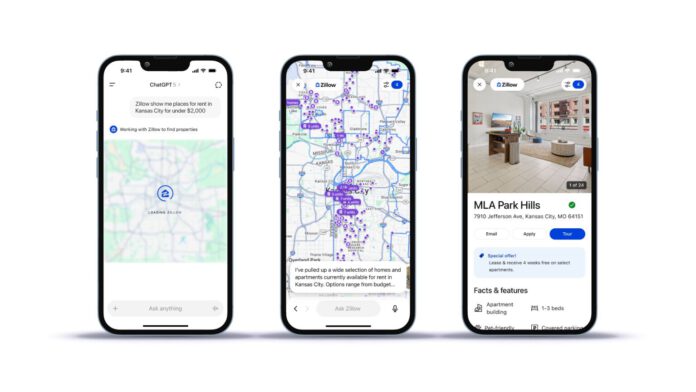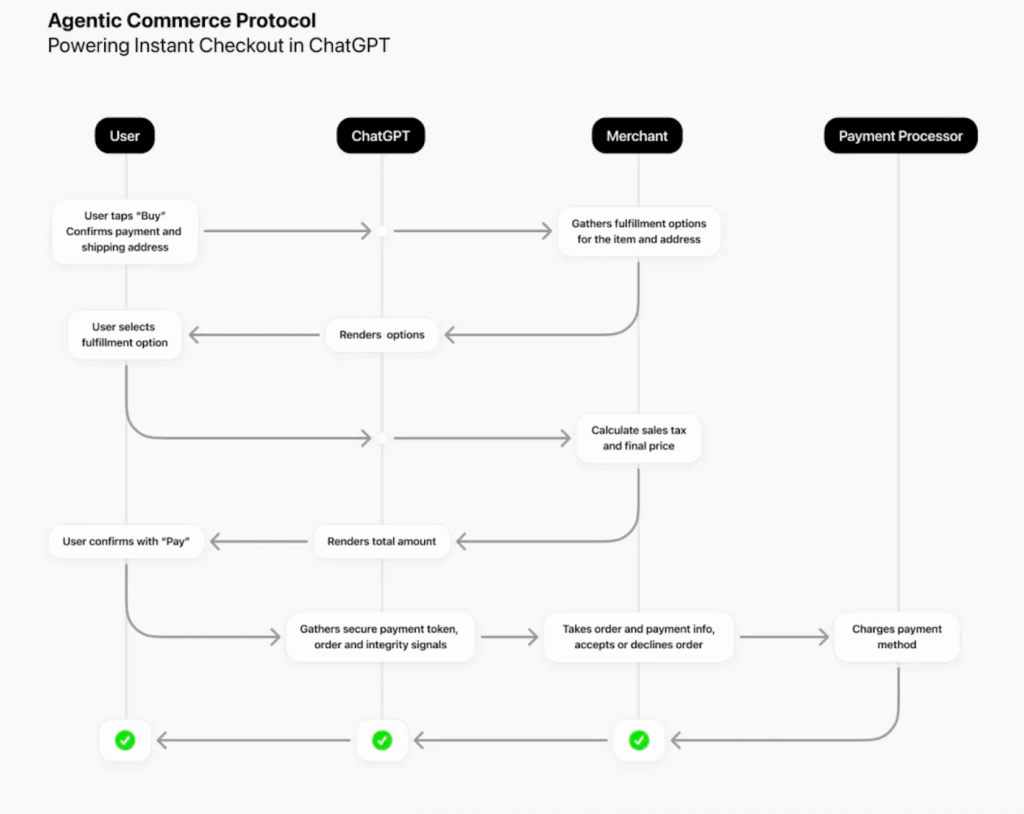
On October 6, OpenAI officially announced the integration of several well-known applications—Booking.com, Canva, Coursera, Expedia, Spotify, Figma, and Zillow—directly into ChatGPT. This development means users can now complete tasks like booking flights, designing posters, generating charts, or even creating playlists, all within a single chat interface. There’s no need to switch between tabs, open new applications, or navigate across websites. For developers, these features are built on an open standard called the Model Context Protocol (MCP). For users, ChatGPT is evolving into more than just a chatbot—it’s becoming a dynamic AI portal.
This raises a fundamental question: Will this innovation follow the path of the much-hyped but underwhelming GPT Store, or does it signal a real shift in how people interact with digital services and applications?
Looking back at the evolution of digital gateways, progress has always revolved around one goal: making access to services more direct and efficient. Early internet portals like Yahoo consolidated content, while search engines like Google and Baidu thrived by providing fast information retrieval. Later, mobile operating systems like iOS and Android became central by hosting and distributing apps, while super-apps like WeChat integrated everyday functions into one ecosystem. Each step in this evolution shortened the distance between user intention and outcome.
OpenAI now appears to be attempting to eliminate that distance altogether. With the first wave of app integrations already live—excluding the EU for regulatory reasons—users across various ChatGPT plans (Free, Go, Plus, and Pro) can invoke these applications through natural conversation. One can now simply type “Spotify, create a party playlist,” or “Zillow, find properties in New York,” and the app will appear in the same chat window with interactive features. Users can browse, make selections, complete transactions, or generate documents without ever leaving the conversation.

What makes this approach even more ambitious is ChatGPT’s proactive suggestion capability. If you’re discussing house hunting, for example, it may automatically recommend Zillow and display interactive listings on a map—all within the chat. This shift from “searching for services” to “executing intent” effectively turns conversation into an operating system. It reimagines apps as natural language interfaces embedded within contextually aware AI.
Over the coming months, more services—including Uber, DoorDash, TripAdvisor, Target, and Instacart—are expected to join. OpenAI has also released an Apps SDK (Software Development Kit), which allows developers to create applications that can connect directly to their backends for features like login, content distribution, or membership services. The company has also launched a Developer Mode to simulate these apps and provide documentation and sample libraries for early adopters. An official application submission and monetisation system is expected to roll out later this year, alongside a public app directory.
According to OpenAI, this is only the beginning of an ecosystem that aims to bring more value to users and new opportunities to developers. If successful, it could give rise to a true “AI App Store,” where applications emerge organically within conversations based on user intent. For developers, this represents a new kind of visibility and distribution model: one that requires no downloads, no app stores, and no traditional marketing channels.
OpenAI’s broader vision is to position ChatGPT not just as a chat assistant, but as a foundational service layer—an intelligent operating environment that redefines how users interact with digital tools. Within this system, applications become contextual, modular nodes, and transactions occur as natural language interactions. Much like Apple transformed mobile distribution through the App Store, OpenAI is attempting to recreate this model through conversational AI.
But this move raises strategic and competitive questions. Other tech giants also have app ecosystems—will they be willing to integrate with ChatGPT?
For companies like Google, the answer is likely no. Google’s dominance is tied to its role as a search gateway, and integrating with ChatGPT—which allows users to bypass search entirely—would erode its core business. Google is instead betting on its own AI assistant, Gemini, tightly integrating it across Gmail, Maps, YouTube, and other properties to keep users within its ecosystem.
Meta is taking a similar approach. It aims to keep user interactions inside its social platforms like Instagram and WhatsApp, where its AI agents can serve contextual functions without giving away control. Meanwhile, other major players—Microsoft, Anthropic, and Amazon—are pushing their own assistant ecosystems in a growing race to control what many now call the “AI gateway.”
With the rise of conversational AI as a new access point to services, familiar tensions around fairness and control will inevitably arise. When multiple apps serve the same function, how does ChatGPT decide which one to recommend or trigger? If ChatGPT becomes an AI-powered “app store,” how will ranking, visibility, and discovery be managed? Will app placement depend on user relevance, algorithmic optimization, strategic partnerships, or advertising bids? And if OpenAI begins taking a cut of transactions—following Apple’s 30% commission model—will it face the same scrutiny over fairness and monopolistic behavior?
OpenAI has not yet detailed its monetisation policies but has indicated that developers whose apps meet quality guidelines will be eligible for inclusion in the app directory and may be featured more prominently during relevant conversations. Monetisation mechanisms will be shared “soon,” including support for the Agentic Commerce Protocol, which would allow users to complete purchases within ChatGPT using a universal checkout experience.
Privacy and data control are also central concerns. By integrating apps like Booking.com or Spotify, ChatGPT gains access to even more personal data—further enriching what some call a “holographic replica” of the user’s life. OpenAI has emphasized that developers must adhere to strict privacy policies, collecting only what is essential and being transparent about permissions. Users will be prompted to authorise any data sharing when first connecting to an app, and more granular privacy controls are expected to roll out later this year. Nonetheless, regulatory scrutiny is almost certain to intensify, particularly in regions like the EU where data protection laws are strict.
Despite these concerns, the potential rewards are massive. Developers may find in ChatGPT a revolutionary new discovery and distribution channel, and OpenAI could reshape the structure of the internet’s service layer. Just as portals changed how we accessed content, search engines changed how we found information, and mobile platforms redefined app distribution, ChatGPT may redefine how we interact with services.
Whether AI-powered assistants become the dominant entry point into digital life depends on a host of factors—user adoption, developer trust, regulatory environment, and competitive innovation. OpenAI currently enjoys a first-mover advantage, with over 800 million users and a strong foundation of developer engagement. But the road ahead will be contested, especially by established giants who are unlikely to yield their ecosystems without a fight.
Moreover, not every app is suitable for conversation-based use. Certain applications—especially games—require rich interfaces, real-time input, and complex user feedback. It remains to be seen how or whether ChatGPT can meaningfully accommodate these kinds of interactions.
Still, the race is on. Much like the early battles over web browsers or mobile operating systems, the fight to become the dominant AI gateway may define the next era of the internet. OpenAI has made its move. The question now is: who will control the front door to the AI-powered world?
Source: ChatGPT, GeekPark, frandroid



